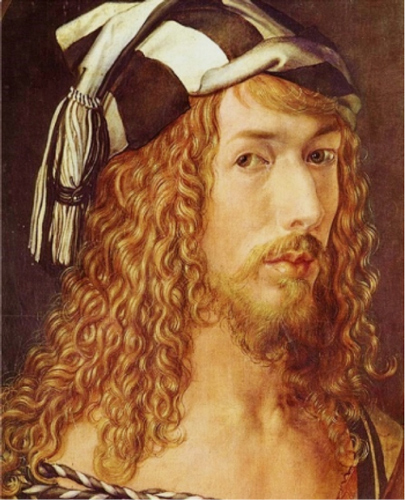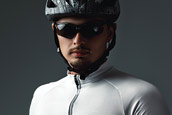
Leonardo da Vinci – Self Portrait (note the
misalignment of the right eye)
But did you know there’s evidence that da Vinci had strabismus, and that it might actually have helped him in his work? A recent study published in JAMA Ophthalmology examined six self-portraits of the great master. Each showed an exotropia of, on average, -10°. The exotropia, believed to be intermittent, would enable da Vinci to utilize monocular vision, which would have enhanced his ability to make an image appear three-dimensional in a two-dimensional medium.
Strabismus affects approximately 4% of the population, and is identified by the direction of the misaligned eye. With exotropia, the eye turns out; with esotropia, the eye turns in, and with hypertropia and hypotropia, the eyes are misaligned vertically. Strabismus is caused by an abnormality in the neuromuscular control of eye movement. It is also seen in patients with cerebral palsy, Down syndrome, hydrocephalus and brain tumor. In adults, common causes are stroke or vascular problems, trauma, neurological problems, and Graves disease (thyroid eye disorders).
When strabismus is identified early, it can be treated and corrected. Eyeglasses, prisms, patching, and vision therapy are correction options, and surgery is sometimes needed. Prism is prescribed with the base direction opposite the deviation. Base out prism is used for esotropia, base in prism for exotropia, etc., with the amount of prism dependent on the degree of deviation. In some cases of esotropia, eyeglasses with a low plus prescription may be enough to correct the problem in that they reduce accommodative stress, and the eye positions itself more normally. In the same way, minus lenses may be helpful for exotropia.
Horizontal misalignments may also be present with vertical misalignments. Treating the primary tropia may improve the other. However, in some cases, oblique prism that combines both vertical and horizontal prism may be needed. Trials with press-on prism are a good way to evaluate how well the prism works, as well as a less expensive alternative to high powered ground in prism.
While da Vinci was able to use his strabismus to pioneer creating the appearance of a third dimension on canvas, most of us will do better with correcting the condition. To learn more about the use of prism in eyewear, check out our CE, "Eyes Right!" An Overview of Prism Use in Eyewear at 2020mag.com/ce.













